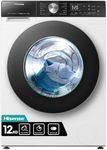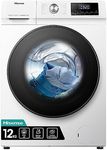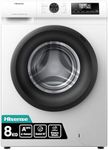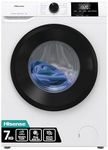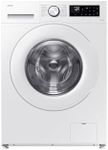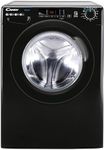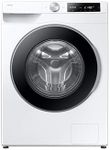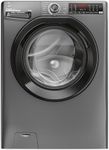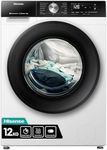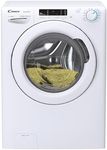Buying Guide for the Best Washing Machines
Choosing the right washing machine can make a significant difference in your laundry routine. It's important to consider your specific needs, such as the size of your household, the types of fabrics you frequently wash, and the space available for the machine. By understanding the key specifications, you can make an informed decision that ensures efficiency, convenience, and longevity of the appliance.CapacityCapacity refers to the amount of laundry a washing machine can handle in a single load, usually measured in kilograms. This is important because it determines how much laundry you can wash at once. Smaller capacities (around 5-7 kg) are suitable for individuals or couples, medium capacities (7-9 kg) are ideal for small families, and larger capacities (9 kg and above) are best for larger families or those who frequently wash bulky items like bedding. Choose a capacity that matches your typical laundry load to avoid overloading the machine or running multiple cycles.
Type (Front Load vs Top Load)Washing machines come in two main types: front load and top load. Front load machines are generally more energy and water-efficient, offer better cleaning performance, and are gentler on clothes. They are ideal for those who prioritize efficiency and have space for a machine that opens from the front. Top load machines are easier to load and unload without bending over, making them a good choice for those with mobility issues or limited space. Consider your physical comfort and space constraints when choosing between these types.
Spin SpeedSpin speed, measured in revolutions per minute (RPM), indicates how fast the drum spins to remove water from the clothes. Higher spin speeds (1200-1600 RPM) extract more water, reducing drying time, which is beneficial if you air-dry your clothes or want to save on dryer energy costs. Lower spin speeds (800-1000 RPM) are gentler on delicate fabrics. Choose a washing machine with adjustable spin speeds to cater to different types of laundry.
Energy EfficiencyEnergy efficiency is a measure of how much electricity a washing machine uses to complete a cycle. Machines are rated from A+++ (most efficient) to D (least efficient). Higher efficiency machines consume less electricity and water, leading to lower utility bills and a smaller environmental footprint. If you are environmentally conscious or want to save on long-term operating costs, opt for a machine with a high energy efficiency rating.
Wash ProgramsWash programs are preset cycles designed for different types of laundry, such as cotton, synthetics, delicates, and wool. Some machines offer specialized programs like quick wash, allergy care, and eco-friendly cycles. These programs optimize water temperature, spin speed, and cycle duration to provide the best care for your clothes. Consider the types of fabrics you frequently wash and look for a machine with programs that match your needs to ensure optimal cleaning and fabric care.
Noise LevelNoise level, measured in decibels (dB), indicates how loud the washing machine is during operation. Lower noise levels (below 50 dB) are ideal for homes where the machine is placed near living areas or bedrooms, ensuring minimal disturbance. Higher noise levels (above 70 dB) might be acceptable if the machine is located in a separate laundry room or basement. Consider your household's tolerance for noise and the placement of the machine when evaluating this spec.
DimensionsDimensions refer to the physical size of the washing machine, including its height, width, and depth. This is crucial for ensuring the machine fits in the designated space in your home. Measure the available space carefully, including any doorways or hallways the machine must pass through during installation. Choose a machine that fits comfortably in your space while allowing for proper ventilation and access for maintenance.
